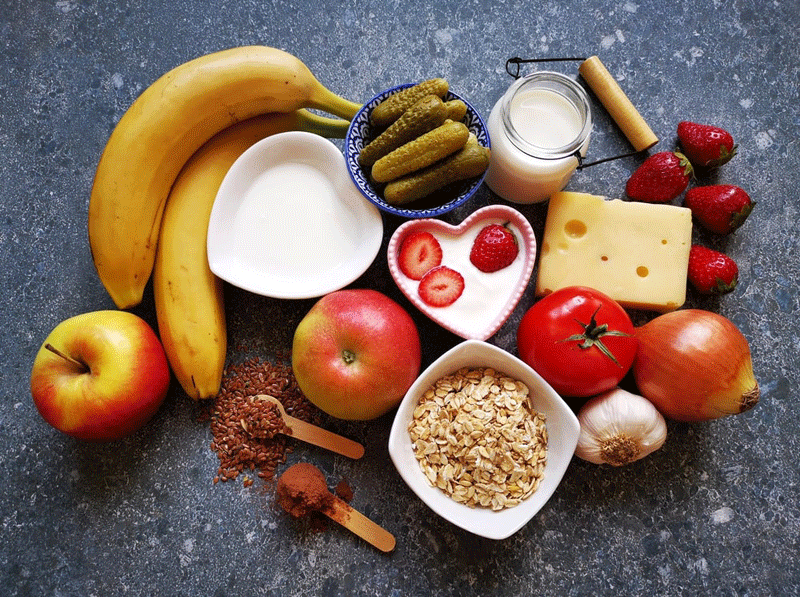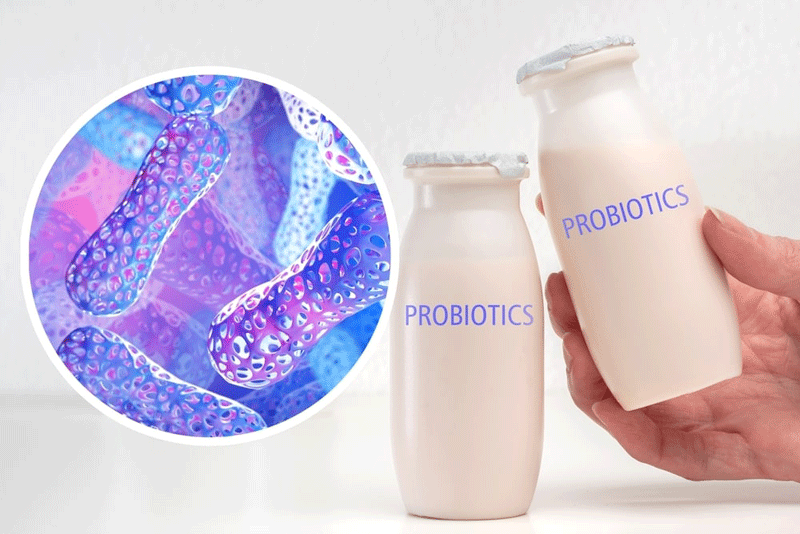Probiotics are the beneficial bacteria for our gut health. However, the common question arises while storing these beneficial bacteria supplements: “Why does temperature matter for probiotics?”
Temperature plays an integral role in the preservation and efficacy of probiotics. As live bacteria are sensitive to environmental factors, probiotics require specific conditions to maintain their viability and health benefits.
Probiotics and their significance in health

Probiotics are live microorganisms that confer health benefits to the host when ingested in adequate amounts, primarily by regulating gut flora. They have become increasingly popular due to their positive effects on gut health, immunity, and more.
What are the different strains of probiotics?
Probiotics are complex bacteria and yeast strains. These beneficial cultures contribute to the delicate balance of the gut biome, which is crucial for digestive health and overall wellness. Probiotic strains, such as Lactobacillus and Bifidobacteria, each have distinct properties. Some are more resilient to heat, while others are more sensitive, affecting their survival in varying environments.
The Survival of Probiotics

Under optimal conditions, probiotics multiply and flourish. Factors like the right pH, adequate moisture, and the absence of antagonistic bacteria are essential for their proliferation.
Factors that affect the life of probiotics
Factors that can make or break their survival are as follows:
Several determinants influence probiotic viability:
- Temperature: Outside their optimal range, bacteria can lose viability.
- Moisture: Excess moisture or dehydration can harm these microorganisms.
- pH Levels: Drastic pH changes can kill probiotics.
- Exposure to Air: Oxygen can reduce the potency of certain strains.
- Competing Bacteria: Harmful bacteria can overpower and kill probiotics.
At what temperature do probiotics die?
The absolute temperature at which probiotics die can vary depending on the specific strain and its resilience to environmental factors. Generally, many probiotic strains begin to lose viability at temperatures exceeding 110°F (43°C), with most strains being severely compromised or killed at temperatures around 120°F (49°C) or higher. However, it’s worth noting that some strains, especially those naturally found in high-temperature environments, might tolerate slightly higher temperatures.
Conversely, cold temperatures might not kill probiotics outright but can render them inactive. Freezing temperatures, especially prolonged exposure to temperatures below 32°F (0°C), can impact the immediate effectiveness of certain probiotic strains.
The Role of Temperature in Probiotic Survival
Temperature governs bacterial metabolism, growth, and viability. Excessive heat or cold extremes can incapacitate probiotics, rendering them ineffective.
The “tipping point” refers to that specific temperature threshold where probiotics transition from thriving to dying. Manufacturers and consumers alike must ensure product efficacy.
Natural Habitats of Probiotics

In nature, probiotics are commonly found in fermented foods like sauerkraut, kimchi, and certain aged cheeses, thriving in environments that support their growth.
Natural habitats of probiotics, especially fermented foods, often undergo varied temperature changes. Heat is produced during fermentation, but many fermented products are stored in cool places to slow microbial activity.
Probiotic Products and Storage Recommendations
Beyond fermented foods, probiotics are available as dietary supplements and infused in yogurts, beverages, and snacks. Manufacturers provide storage recommendations, often suggesting refrigeration or cool, dry places to ensure product efficacy and extended shelf life.
Ideal Temperature Range for Probiotic Storage
Experts agree that probiotics thrive best at room temperature, with specific strains having slight variations in their ideal ranges. Exceeding the upper limit can lead to bacterial death, while temperatures below the optimal range can render bacteria dormant, affecting their health benefits upon ingestion.
The Impact of Heat
Heat accelerates bacterial metabolism, leading to quicker depletion of resources, ultimately causing their death. Exposure to high temperatures can denature bacterial proteins, disrupt their cellular membranes, and interfere with their metabolic processes.
Cold Temperatures and Probiotic Viability
Can colds harm these microorganisms? While heat is detrimental, excessive cold can make probiotics dormant, compromising their immediate effectiveness when consumed, although they might reactivate upon reaching the gut.
When faced with unfavorable conditions, probiotics enter a state of inactivity. They aren’t dead but are inactive. Once conditions become favorable, they can become active again.
How Packaging Can Protect Probiotics from Temperature Extremes?
Modern packaging techniques, like vacuum sealing and the use of desiccants, protect probiotics from environmental factors, including temperature. Certain packaging materials provide insulation, maintaining a stable internal environment crucial for probiotics shipped across varied climates.
Effects of Fluctuating Temperatures
Stable temperatures ensure consistent probiotic activity. Fluctuations can stress these microorganisms, leading to reduced efficacy. Quick transitions, like repeatedly moving from refrigeration to room temperature, can shock probiotics, diminishing their viability.
Common situations where probiotics are at risk
Probiotics face temperature challenges during shipping, especially internationally. Even at home, improper storage, like placing them near heat sources, can compromise their health. Choosing suppliers that prioritize insulation during delivery and traveling with probiotics in cool, dry containers can mitigate risks.
The Long-Term Impact of Temperature on Probiotic Potency
Does exposure decrease their efficacy? Yes, prolonged exposure to non-optimal temperatures reduces the health benefits of probiotics as the number of live bacteria diminishes. Viability denotes the number of live bacteria in a probiotic product. Higher viability generally translates to greater potency and better health benefits.
Ensuring Probiotic Survival at Home
Keeping probiotics in cool, dry places, away from sunlight and moisture, maximizes their lifespan. Refrigeration is often recommended, especially after opening. While refrigeration can prolong the life of many probiotics, not all require it. It’s essential to adhere to the manufacturer’s guidelines for each product.
Commercial Production and Probiotic Safety
Manufacturers use advanced fermentation techniques, select resilient strains, and employ protective packaging to maximize probiotic shelf life. Challenges faced during production and transportation range from choosing strains to ensuring stability during shipping, and manufacturers face numerous hurdles to deliver a potent probiotic product to consumers.
